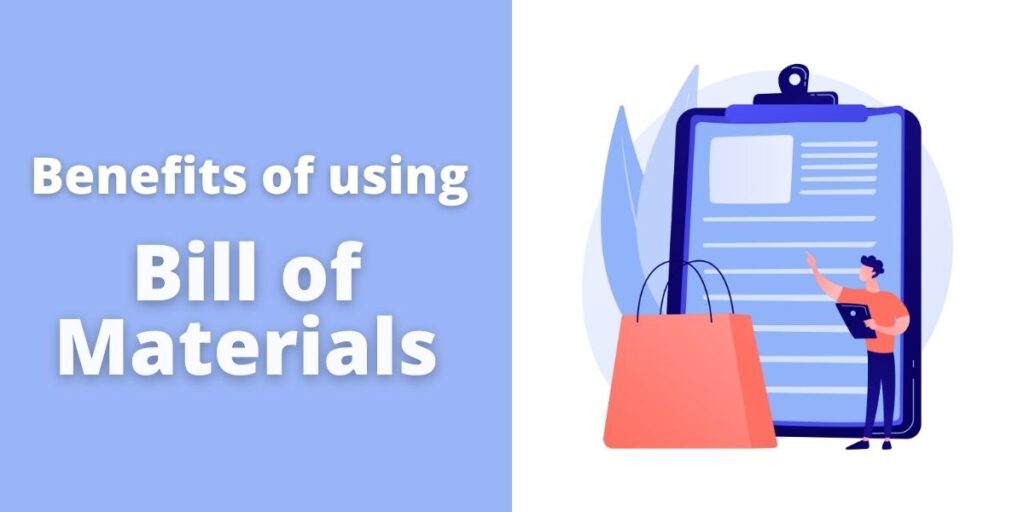What is Bill of Materials and what are the Benefits of using Bill of Materials

A detailed list of all the components required to manufacture or sell a product is called a Bill of Materials (BOM).
What is Bill of Materials?
Bill of Materials is a comprehensive list of all the materials and parts that a contractor needs to make a particular product. The BOM should include not only raw materials but also any assemblies, sub-components, and parts, as well as the exact quantity of each of them.
The exact layout of the BOM will vary depending on the nature of the work being developed, but there are generally two different types of BOMs for each product:
-An engineering phase for developing the product, and
-Another mass production stage for delivering products to customers.
BOM Structure
A structure related to the methods in which the bill of materials records product components. Generally, there are two methodologies: a single-level BOM, where all items are combined into a single level, and a multi-level BOM, where things are nested into two or more layers. Structural decisions for individual products and product families can have a significant impact not only on a business but also on its supply chain and distribution partners.
Single level-BoM: is a relatively simple enumeration of the materials that make up a project. In this type, each activity or sub-activity is displayed only once, along with the required quantity of each activity to complete the project. While this form of BOM is easy to create, it is not sufficient for complex products because it does not describe the links between parent and child components or assemblies and sub-assemblies. A single-level BOM can complicate determining which components need to be replaced or repaired when a product fails.
Multilevel-BoM: is a BOM with multiple levels that takes more time to produce but provides more information and specificity about the parent and child components of the product. The total amount of materials required is displayed in the multi-level bill of materials. In addition, the indented structure of products shows the links between parent and child products and assemblies and subassemblies. Because the BOM is the basis of a construction planning system, the information it contains is the basis for other business activities, such as construction resource planning, product costing, construction material supply, and BOQ Management.
Difference between BOQ and BOM
The BOM is an inventory list of raw materials, parts, and components, while the BOQ is the total amount of work required to complete the project.
Benefits of Using a Bill of Materials
BOMs play an important role in construction companies because they specify the material of a product. Because it determines the level of importance of modifications, BOM management is critical to Quality Management Systems (QMS) and Construction Lifecycle Management (CLM).
A well-defined bill of materials (BOM) helps businesses in the following ways:
– Plan raw material purchases.
– Calculate material costs.
– Control your inventory.
– Track and plan your material requirements.
– Maintain complete and accurate records.
– Ensure supply reliability while reducing waste.
The elimination of ambiguity ensures that the Construction can be reproduced reliably and its quality can be managed. Businesses cannot determine the following things until they obtain this information:
– Control product quality.
– Product reliability.
– Construction stability.
– Comply with regulatory requirements.
– Customer commitment.
Wrapping Up
BOM is one of the main features you need in your construction ERP software. If your business is facing problems related to managing manufacturing and stocks, you can consider Real Builder as your first choice.
For more information, you can contact us at +91-8799316235 or draft a mail to us at supportdesk@dataman.in.

